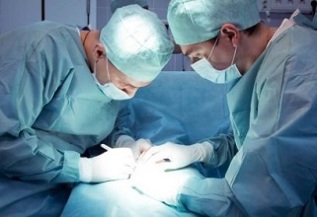
The surgical method of thickening the penis by transplanting skin and fat flaps is a response to the short-term effect of subcutaneous lipofilling. If we compare this method of penis enlargement with the introduction of fat cells, it requires great professional skills.
A penis thickening with skin and fat flaps implies a more complex procedure and a high risk of injury. Therefore, the patient should weigh the pros and cons before performing the operation.
Penis enlargement through transplantation of skin and fat flaps
The operation in question, which is performed under general anesthesia, takes several hours. It all starts with the collection of transplants. They are usually transplanted from the patient's buttock region, as this subcutaneous layer is characterized by a greater density and the number of connective tissue septa. You can also use skin and fat flaps from the groin area.
The area of the removed material depends directly on the size of the male genital organ. As a result, the surgeon may not be limited to just one implant. After suturing the defective areas of the donor area, incisions are made on the penis shaft. Skin and fat flaps are inserted under the upper layers of the phallic skin by a specialist. When the transplant process is complete, the surgeon sutures the cuts.
As already mentioned, donor skin and fat flaps are most often removed from the buttock region. This material has a lower fat content, so it doesn't lose as much density during the transplant process. The cells of the adipose tissue of the gluteal lobes experience the pressure of the trunk when sitting, therefore they have a denser structure.
What are the indications and contraindications

An unsatisfactory thickness of the penis can lead to serious psychological problems. This can negatively affect a man's self-esteem as well as his success in intimate life. As a result, the indications for the operation are medical, psychological and aesthetic.
If there are contraindications, a man must undergo an examination before performing an operation to thicken the penis. Surgical interventions are questionable when the patient is confronted with mental, genitourinary, cardiovascular or immune problems.
It is important to pay attention to the ability of the blood to clot and to ensure that the skin of the penis and the donor area (buttocks, groin area) is not damaged. The list of contraindications is supplemented by diabetes mellitus and inflammatory processes.
Rehabilitation period and results
On the one hand, a longer effect can be achieved by transplanting skin and fat flaps than by lipofilling; on the other hand, implants without epidermis can be rejected because the material used is not adequately supplied with blood. The risk of changing the contours of the penis trunk due to the uneven density of natural grafts should not be excluded.
Due to the high risk of rejection of skin and fat blocks and the occurrence of inflammatory processes, specialists increasingly discourage patients from such a surgical intervention and recommend a procedure with muscle transplantation.

Such an operation makes it possible to maintain the correct blood supply to the grafts and also guarantees a lifelong thickening of the penis.
The pros and cons of using fatty skin flaps include the following:
- a more stable result is observed in contrast to lipofilling;
- Despite the scars, the aesthetics in the donor area are preserved.
- used material loses minimal density.
Disadvantages:
- financial side of the problem;
- Risks of rejection of skin and fat flaps;
- the likelihood of deformation of the phallic stem;
- the risk of postoperative wound supuration.
















































